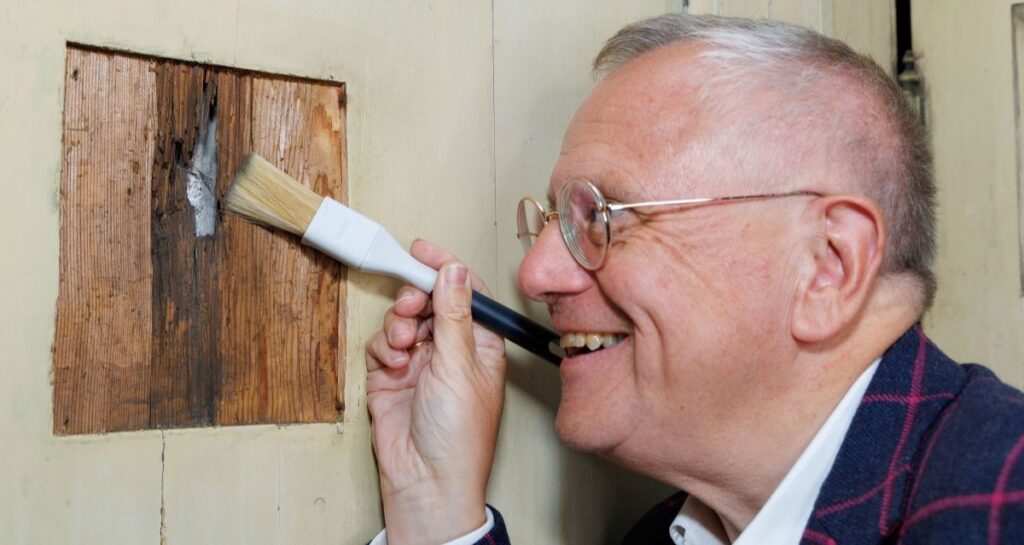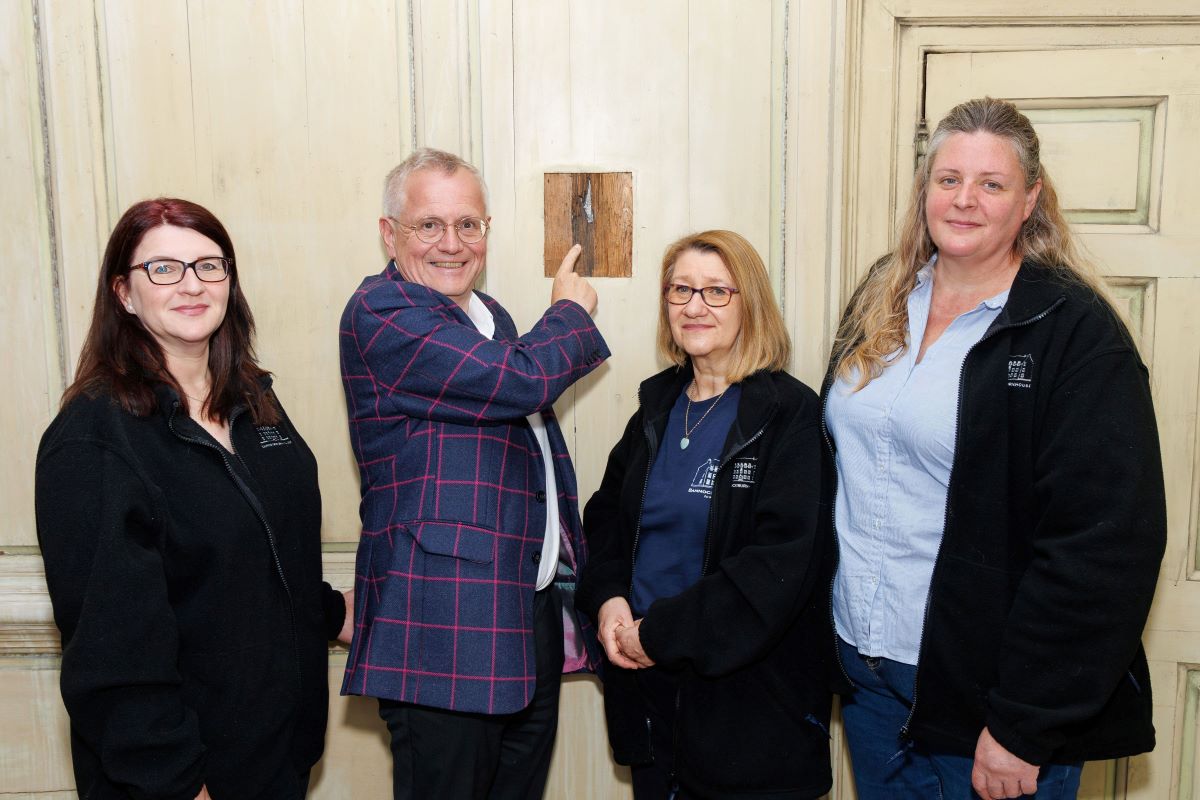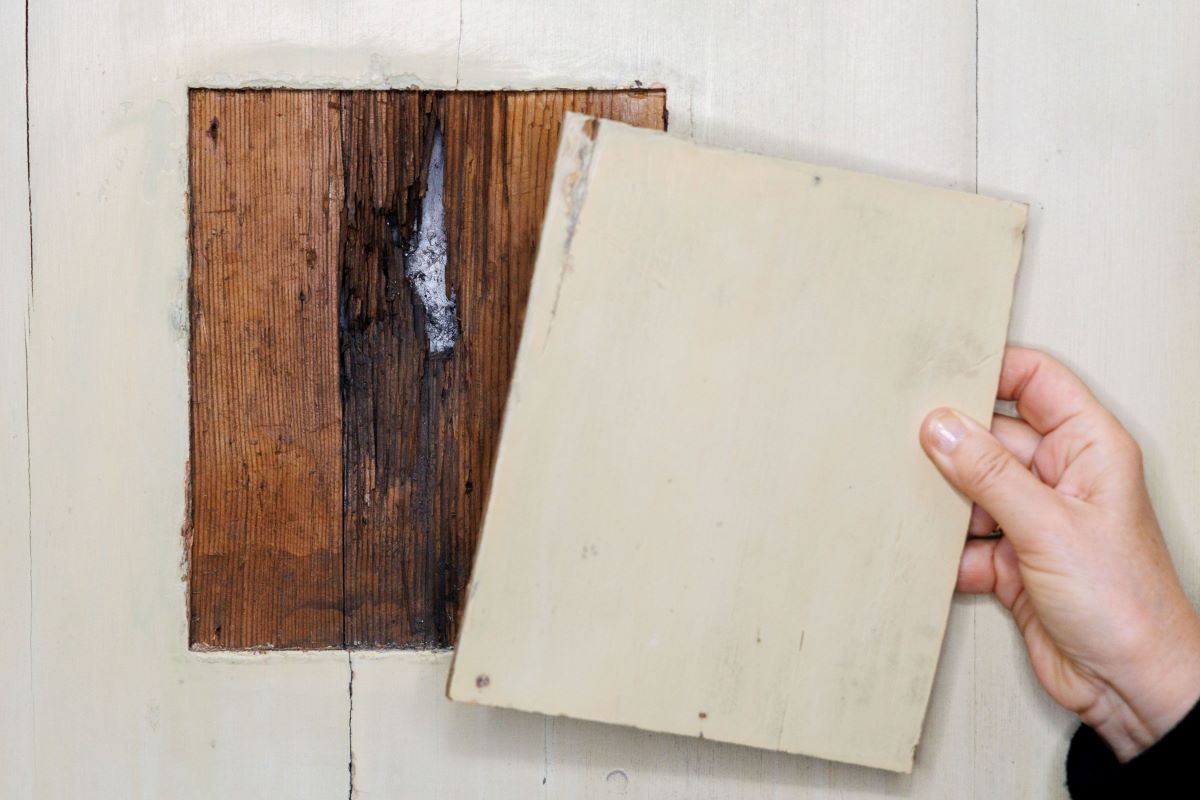
Could this bullet hole be proof of Bonnie Prince Charlie assassination attempt in Stirling?
Historians have discovered a bullet hole at Bannockburn House which they believe is proof of an assassination attempt against Bonnie Prince Charlie.
Amidst the delicate plaster work and ancient wooden panelling a the Grade A listed house, a musket ball hole has been discovered.
Prince Charles Edward Stuart took shelter at Bannockburn House in 1746 when he fell ill. It is thought that a shot was fired through the window of the room he was sleeping in.
He stayed in a large bedroom on the first floor’s west wing, which features a delicate plaster frieze of mermaids and multiple layers of ancient wooden panelling.

Credit: Mark Ferguson

Credit: Mark Ferguson
An assassin fired a shot through the bedroom window, missing Bonnie Prince Charlie as he slept and lodged itself in the wall at the head of the bed.
For centuries, the existence of this musket ball hole remained a tantalising legend passed down through the generations, its whereabouts shrouded in mystery, until now.
Volunteers had unsuccessfully searched for the hole until David Jenkinson whose aunt was the housekeeper for the last owner in residence, provided the crucial lead.
In April this year, the hole was found under a secret panel by volunteer researchers on the House’s History Team.
This remarkable discovery has been announced to coincide with the 279th anniversary of Bonnie Prince Charlie’s arrival on Scottish soil.
Catherine Bradley, History Team Lead at Bannockburn House, recounted the moment of discovery.
‘It was an exciting moment as I opened it. I carefully lifted the panel and saw the splintered wood and I knew we’d found something very special,’ she said.

The find was then authenticated by Jacobite historian Professor Murray Pittock, of the University of Glasgow, and Stirling Council archaeologist Dr Murray Cook.
‘I have visited the bedroom many times over the years and always tried to imagine the Prince and the resulting confusion from the musket fire and sounds of smashing glass alerting everyone to the assassin,’ Dr Cook said.
‘However, to see the damage and to touch the spot sent a thrill down my spine – an incredible tangible experience and worth visiting Bannockburn House for this alone.’
Leading historian Professor Pittock, author of Culloden, The Myth of the Jacobite Clans, Jacobitism and many other works, said: ‘I am pleased to endorse that BannockburnHouse Trust has almost certainly discovered forensic evidence of an assassination attempt on Prince Charles in 1746.
‘This is critically important not only for our understanding of the Rising but also for the role the attack may have played in intensifying the relationship between Charles and Clementina Walkinshaw, which led to the birth of his only child.’
Read more Culture stories here.
Subscribe to read the latest issue of Scottish Field.
TAGS

